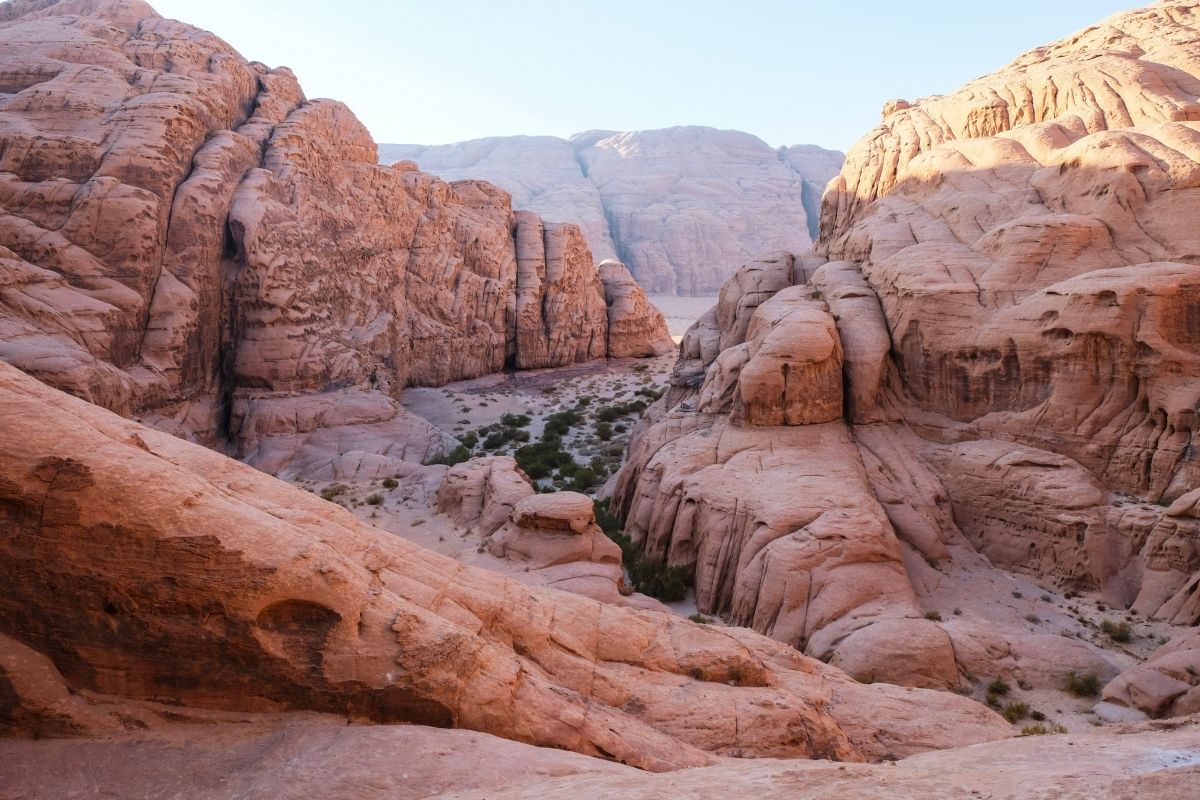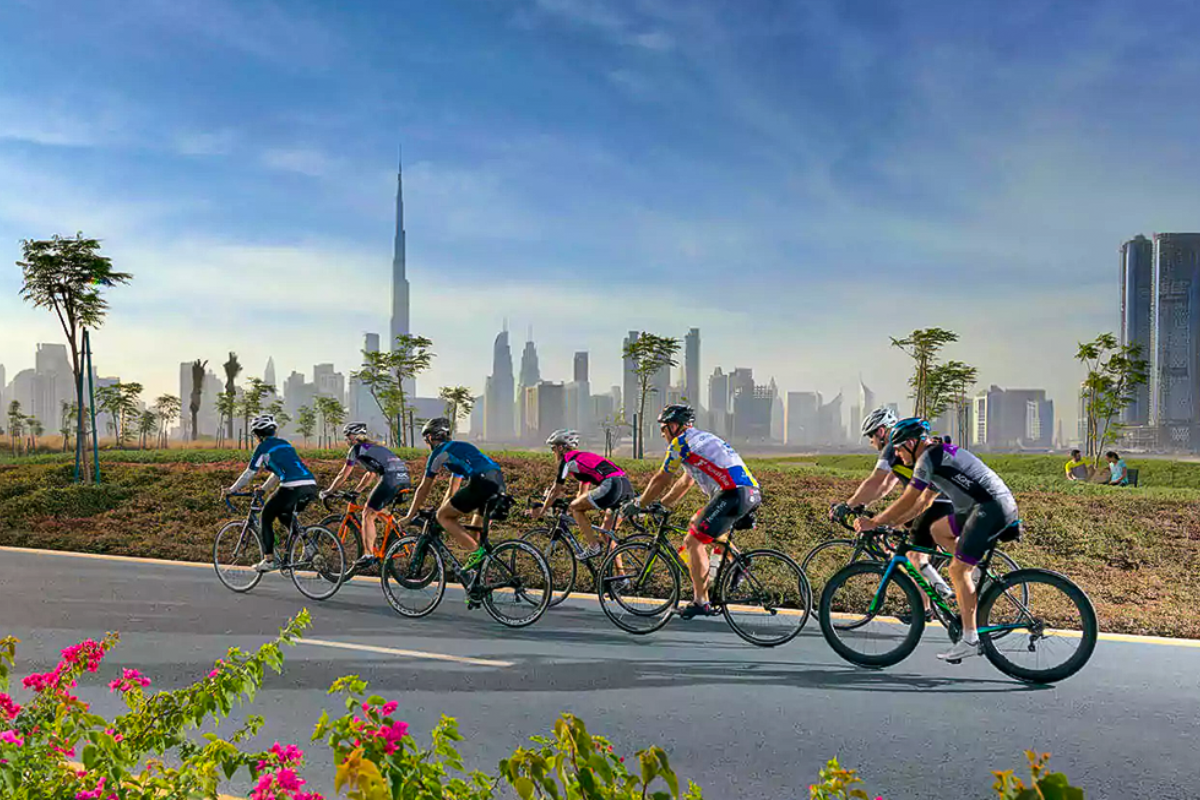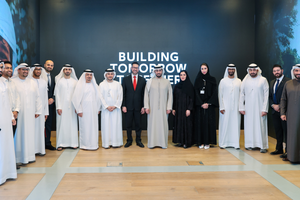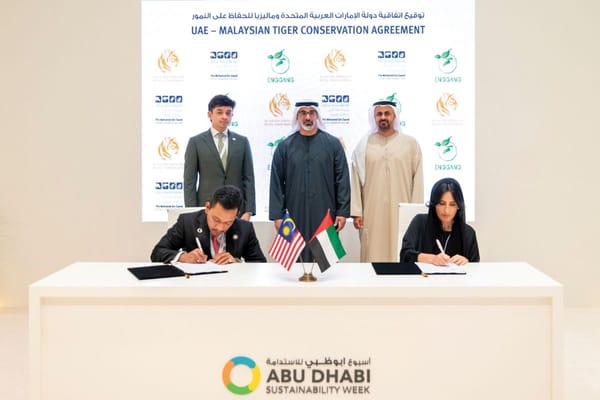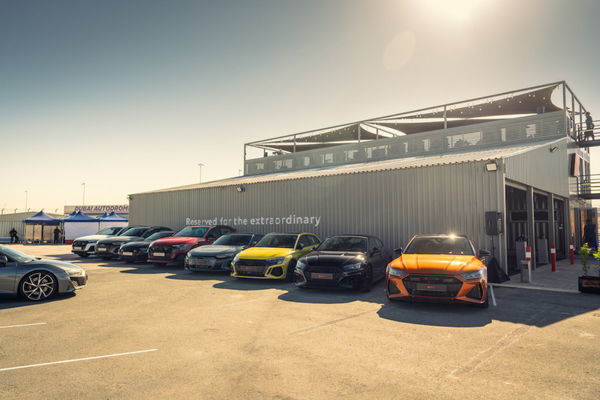Dubai, traditionally known for its expansive highways and car-centric infrastructure, is undergoing a remarkable transformation into a bike-friendly city. This shift is particularly noteworthy given the city's rapid urban development, which has historically prioritized automobiles.
The evolution of Dubai's cycling culture has been gradual yet impactful, garnering increasing interest from both residents and tourists. In recent years, the city has witnessed a surge in cycling enthusiasts, supported by significant investments in infrastructure and community initiatives. For instance, the development of dedicated cycling tracks, such as the 93-kilometer climate-controlled highway known as "The Loop," aims to connect over 3 million residents to key services and locations within minutes.
Additionally, the Dubai 2040 Urban Master Plan emphasizes the promotion of cycling and walking as primary modes of transportation, reflecting the city's commitment to sustainable and active living.
This article delves into the growth of Dubai's cycling culture, highlighting key developments and their significance in enhancing the urban lifestyle. By examining infrastructure projects, community engagement, and policy initiatives, we aim to provide a comprehensive overview of how cycling is quietly revolutionizing mobility in Dubai.
Early Perceptions of Cycling in Dubai
In the early stages of Dubai's development, cycling was primarily viewed as a leisure activity or a means of short-distance commuting, particularly among laborers and low-income workers. The city's infrastructure was predominantly designed to accommodate automobiles, with limited provisions for cyclists. This lack of dedicated cycling paths often forced cyclists to navigate busy roads alongside motor vehicles, posing safety concerns and discouraging the widespread adoption of cycling as a viable mode of transportation.
Cultural perceptions further influenced the limited uptake of cycling. In a society where car ownership is often associated with status and convenience, cycling was not traditionally embraced as a mainstream mode of transport. This cultural inclination towards automobiles, combined with the city's rapid urbanization and expansive layout, contributed to the marginalization of cycling in daily life.
However, recent years have witnessed a paradigm shift. Recognizing the benefits of cycling for health, environment, and urban mobility, Dubai has embarked on ambitious plans to integrate cycling into its transportation framework. The 'Dubai Cycle City 2040' initiative envisions the development of extensive cycling infrastructure, including projects like THE LOOP—a 93-kilometer climate-controlled cycling highway designed to connect residents to key services and locations within minutes.
These developments signify a transformative approach to urban planning, aiming to make cycling and walking the primary modes of transport for daily commutes for more than 80% of Dubai’s residents by 2040.
This shift not only addresses previous infrastructural and cultural barriers but also aligns with global sustainability goals, positioning Dubai as a forward-thinking metropolis committed to enhancing the quality of urban life.
Key Factors Driving the Growth of Cycling Culture
Dubai's cycling culture has experienced significant growth, driven by government initiatives, a rising interest in fitness, and its appeal to tourists.
Government Initiatives and Investments
The Dubai government has made substantial investments in cycling infrastructure to promote sustainable transportation and enhance urban mobility. The Dubai 2040 Urban Master Plan prioritizes pedestrian and cycling-friendly environments, aiming to make Dubai the world's most bike-friendly city by 2040, surpassing Amsterdam and Copenhagen.
Key cycling tracks developed include:
- Nad Al Sheba Cycling Track: A converted camel track near Meydan Racecourse, offering views of Downtown Dubai and Burj Khalifa, with loops of 4km, 6km, and 8km.
- Al Qudra Cycling Track: One of the longest in the UAE, this track offers scenic desert views and is popular among long-distance cyclists.
- Meydan to Downtown Cycling Corridor: Connecting key urban hubs, this corridor enhances cyclists' connectivity within the city.
Additionally, the Dubai Cycle City 2040 initiative envisions a comprehensive cycling network, including projects like THE LOOP, a 93 km climate-controlled cycling highway designed to connect residents to key services and locations within minutes.
Rising Interest in Fitness and Lifestyle
There is a growing health-conscious population in Dubai seeking alternative forms of exercise. Events like the Dubai Ride, which in its 2023 edition saw more than 35,000 cyclists participate, and the Spinneys Dubai 92 Cycle Challenge have seen increased participation, reflecting the community's engagement with cycling as a fitness activity.
Social media platforms have also played a significant role in promoting cycling as a lifestyle activity, with numerous groups and influencers sharing their cycling experiences, routes, and tips, thereby encouraging more residents to take up the sport.
Tourism Appeal
Cycling tours have become increasingly popular among tourists seeking unique ways to explore the city. Bike rental services are readily available in key tourist areas such as Downtown Dubai, Jumeirah, and Dubai Marina, providing convenient access for visitors.
For those interested in eco-tourism, trails like the Hatta Mountain Bike Trail offer adventure and scenic views, catering to both novice and experienced cyclists looking to experience Dubai's natural landscapes.
These combined efforts and growing interests have significantly contributed to the flourishing cycling culture in Dubai, aligning with the city's vision of promoting a healthier and more sustainable urban lifestyle.
The Infrastructure Revolution
Dubai's commitment to enhancing its cycling infrastructure has led to the development of several key facilities and programs that promote cycling as a viable mode of transportation and leisure activity.
Dedicated Cycling Tracks
- Al Qudra Cycling Track: Spanning approximately 86 kilometers, this track is popular for long-distance cycling and offers scenic desert views, attracting both amateur and professional cyclists.
- Jumeirah Corniche Track: A scenic coastal path stretching 14 kilometers along the Arabian Gulf, ideal for both tourists and residents seeking a leisurely ride with picturesque views of the coastline.
- Dubai Autodrome Track: Provides a unique experience where cyclists can ride on a professional racetrack, offering a safe and controlled environment for cycling enthusiasts.
Bike-Sharing Programs
Dubai's first bike-sharing service, Careem Bike, has played a significant role in encouraging short-distance travel. The program has expanded its network across key locations in the city, providing residents and tourists with convenient access to bicycles for short commutes and leisure rides.
Cycling-Friendly Communities
Residential communities such as Dubai Hills Estate and Mudon have been designed with cycling in mind, featuring safe, connected cycling routes within these neighborhoods. These developments emphasize the importance of integrating cycling infrastructure into community planning, promoting a healthy and active lifestyle among residents
Cultural Shift and Community Engagement
Dubai's cycling culture has undergone a significant transformation, with community engagement playing a pivotal role in this evolution.
Changing Attitudes Toward Cycling
Cycling in Dubai has transitioned from being merely a recreational activity to becoming an integral part of daily life for many residents. There is a growing acceptance of cycling as a viable commuting option, particularly for short distances, reflecting a shift towards sustainable and health-conscious transportation choices.
Cycling Clubs and Groups
The emergence of various cycling clubs has been instrumental in fostering a sense of community and promoting cycling safety. Notable groups include:
- Dubai Roadsters: One of the oldest and most popular cycling groups in the city, catering to riders of all levels.
- Cycle Safe Dubai: Focused on safe riding practices, this group organizes regular rides, particularly on the Al Qudra track.
- Velo Vixens: A women-only cycling club dedicated to promoting health and fitness among female cyclists in Dubai.
These clubs not only provide structured riding opportunities but also emphasize safety, camaraderie, and the overall growth of the cycling community in Dubai.
Role of Schools and Families
Educational institutions and families are increasingly recognizing the benefits of cycling. Some schools have introduced cycling programs and developed bike-friendly campuses to encourage students to adopt cycling as a mode of transport and physical activity. Additionally, families are embracing cycling as a weekend activity, promoting a healthy lifestyle, and fostering quality time together.
This cultural shift towards cycling is further supported by the development of dedicated cycling tracks and infrastructure across the city, making it safer and more convenient for individuals and families to engage in cycling activities.
Challenges in Promoting Cycling Culture
Dubai’s cycling culture faces several challenges that need strategic solutions for wider adoption.
Weather Constraints
With summer temperatures often exceeding 40°C, cycling during the day becomes nearly impossible. To overcome this, Dubai has planned The Loop, a 93-kilometer climate-controlled cycling highway designed to provide year-round comfort for cyclists. Until its completion, early morning or late evening rides remain viable options for enthusiasts looking to beat the heat.
Traffic Safety Concerns
Even with the ongoing development of cycling tracks, safety remains a primary concern. Cyclists often have to share roads with fast-moving vehicles in areas without dedicated paths. In response, the government has increased investment in exclusive cycling lanes and launched safety campaigns to promote responsible road-sharing practices. These efforts aim to reduce risks and encourage more people to take up cycling.
Limited Accessibility
While popular tracks like Al Qudra and Jumeirah Corniche are well-maintained, many residential areas lack proper cycling infrastructure. The Dubai Cycle City 2040 initiative plans to extend the network to over 1,000 kilometers of interconnected cycling routes, including integration with public transport hubs for seamless multi-modal travel.
The Future of Cycling in Dubai
Dubai is actively advancing its cycling infrastructure to promote sustainable urban mobility and position itself as a leading global cycling destination.
Ongoing Developments and Future Plans
The Dubai Cycle City 2040 initiative aims to establish over 1,000 kilometers of cycling infrastructure, including innovative projects like THE LOOP—a 93-kilometer climate-controlled cycling highway designed to connect residents to key services within minutes.
Additionally, the Dubai Green Spine project plans to transform key highways with pedestrian paths and cycling tracks, incorporating smart technology such as IoT sensors for optimized traffic management and energy use.
Integration with Public Transport
Efforts are underway to seamlessly integrate cycling with public transportation systems. The development of cycling tracks alongside metro and tram routes facilitates combined commutes, enhancing accessibility and convenience for cyclists.
Vision as a Global Cycling Destination
Dubai aspires to surpass cities like Amsterdam and Copenhagen to become the world's most bike-friendly city by 2040. This vision includes hosting international cycling events and races, attracting enthusiasts worldwide, and revitalizing neighborhoods with green spaces, sports facilities, and urban agriculture to support a vibrant cycling culture.
Dubai’s journey toward becoming a bike-friendly city has been quiet yet transformative. What once was a niche activity has now grown into a cultural trend, embraced by an increasing number of residents and visitors alike. This evolution has been driven by a combination of government efforts to promote sustainable urban mobility, rising interest in fitness and well-being, and community-driven initiatives that encourage active lifestyles.
Cycling, which was once viewed primarily as a leisure activity, is now an integral part of Dubai’s urban identity. With growing health awareness, more people are turning to cycling not only as a recreational activity but also as a means of short-distance commuting. The support from local cycling communities and clubs has played a crucial role in fostering engagement and making cycling accessible to all.
Also Read:



